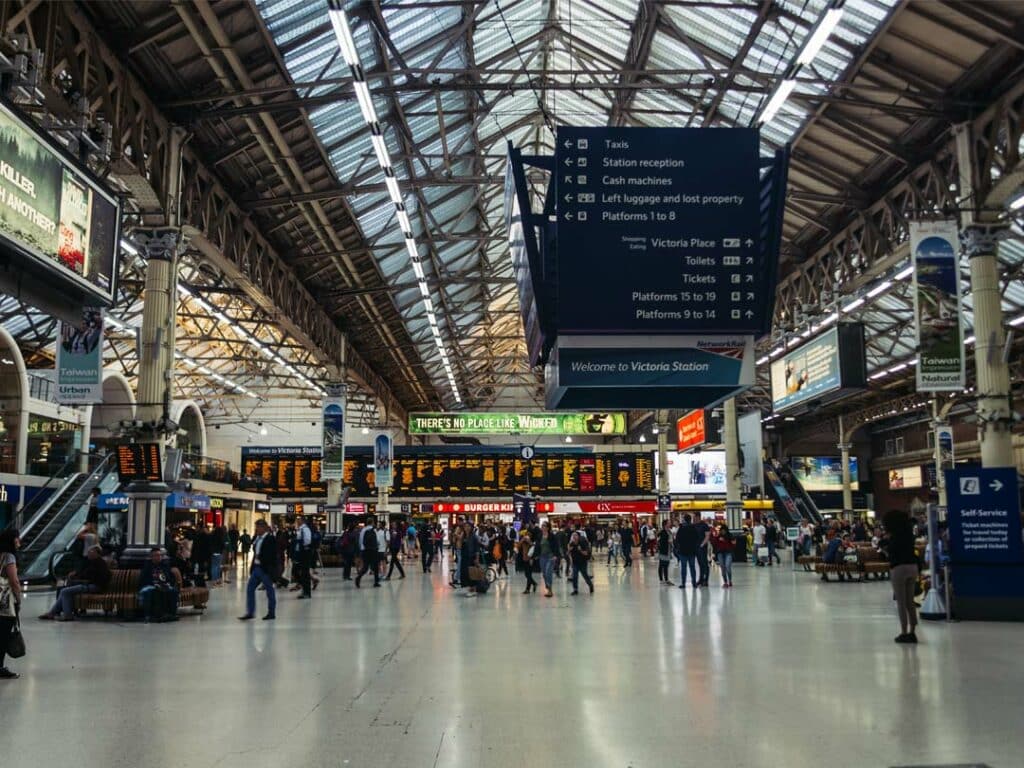In a world where digitalisation is reshaping industries and revolutionising the way we live and work, public transport, including the railway sector is no exception. The concept of a “Digital Rail” is rapidly gaining momentum, promising to transform the future of rail transportation. In this blog post, we’ll embark on a journey through the landscape of digital rail, exploring the Internet of Trains, railway digitalisation and the Digital Railway Strategy.
The Rise of Digital Rail
Digital Rail, at its core, is the application of cutting-edge digital technology to the railway industry. It represents a fundamental shift in how railways are planned, operated and maintained, with the ultimate goal of delivering safer, more efficient and environmentally sustainable rail services.
Internet of Trains
One of the cornerstones of digital rail is the Internet of Trains. Much like the Internet of Things (IoT), this concept envisions a connected ecosystem of trains, trackside infrastructure and control systems. Trains become “smart” with sensors and data connectivity, enabling real-time monitoring and improve communication with other trains and passenger systems to increase capacity.
Railway Digitalisation
Railway digitalisation encompasses a wide range of technologies and solutions, from advanced signalling systems and smart maintenance tools to data analytics and predictive maintenance. It involves the collection and analysis of vast amounts of data to optimise operations, reduce downtime and enhance safety.
Digital Railway Strategy
Many countries, including the UK, have embraced the Digital Railway Strategy as a roadmap for transforming their rail networks. This strategy outlines key objectives such as improving capacity, reliability and the passenger experience through digital technology adoption, all things that align heavily with Network Rail’s CP7 Strategic Business Plan.

The Benefits of Digital Rail
Enhanced Safety
Digital rail introduces advanced safety measures, including collision avoidance systems and predictive maintenance, and works to improve communication, reducing the risk of accidents and incidents.
Improved Capacity
Through better traffic management and optimised schedules, digital rail can accommodate more trains and passengers without the need for extensive infrastructure expansion. It will also allow rail infrastructure managers and freight operators to increase the freight rail industry in the UK and make it more competitive.
Reduced Environmental Impact
Digital rail contributes to sustainability by enabling electrification projects and reducing carbon emissions through efficient operations – helping Network Rail to meet their net zero carbon emission goals.
Improved Punctuality
Real-time data and predictive analytics allow for more accurate timetables, reducing delays and improving punctuality as well as overall passenger experience.
Cost Savings
By minimising downtime through predictive maintenance and optimising energy consumption, digital rail can lead to significant cost savings.

The Challenges Ahead
While the promise of digital rail is enticing, there are challenges to overcome:
1. Infrastructure Upgrades: Implementing digital rail often requires significant infrastructure upgrades, including the installation of sensors, communication networks, and advanced signalling systems.
2. Data Security: As rail systems become more connected, ensuring the security of data and systems becomes paramount to protect against cyber threats.
3. Skill Shortages: The transition to digital rail demands a skilled workforce capable of managing and maintaining these advanced systems.
4. Regulatory Hurdles: Adapting regulations and standards to accommodate digital rail technology and products can be a complex process. Suppliers across the industry, like us here at RSP have to be adaptable and our products ready to integrate into a more digital rail sector system.
5. Interoperability: Ensuring different rail systems can seamlessly communicate and share data is crucial for the success of digital rail. Digital solutions must be able to be adopted across borders and compatible in order for the digital transformation to succeed and be reliable across the network.
6. Issues with artificial intelligence and machine learning: With some trains already operating at full automation Hitachi believe that driverless trains will aid safety and passenger experience, reducing the risk of human error. However, people will need time to trust the safety of the technology within such trains, believing in many respects computer can still not quite do what humans can do.
The Future of Rail Transportation
Digital rail is not a distant dream; it’s a tangible reality that is already transforming the railway industry. From innovative projects involving high-speed rail networks in Europe to urban transit systems in Asia, the benefits of digital rail are being realized.
As a railway power and signaling design and supply company, we understand the significance of digital rail. Our expertise in providing innovative solutions for digital signaling, electrification, and data communication positions us at the forefront of this transformation. We are committed to supporting the railway industry’s journey toward a more efficient, sustainable, and passenger-centric future.
Our role in the digital railway
Digital rail is absolutely the future of rail transportation—a journey that promises to revolutionise how railways operate and serve their communities over the next decade or so. With the Internet of Trains, railway digitalisation, and the Digital Railway Strategy leading the way, we are on the brink of an exciting era for rail travel.
As we continue down this transformative path, we, as a railway power and signalling design and supply company, remain dedicated to driving innovation and ensuring that the railways of the future are safe, efficient, and environmentally sustainable. Our products will continue to meet the standards set out by Network Rail for use on their railway, with comprehensive testing and expert designers on board we know that digital rail is not just a vision; it’s a journey that is well underway, and together, we are shaping the future of the railway.

